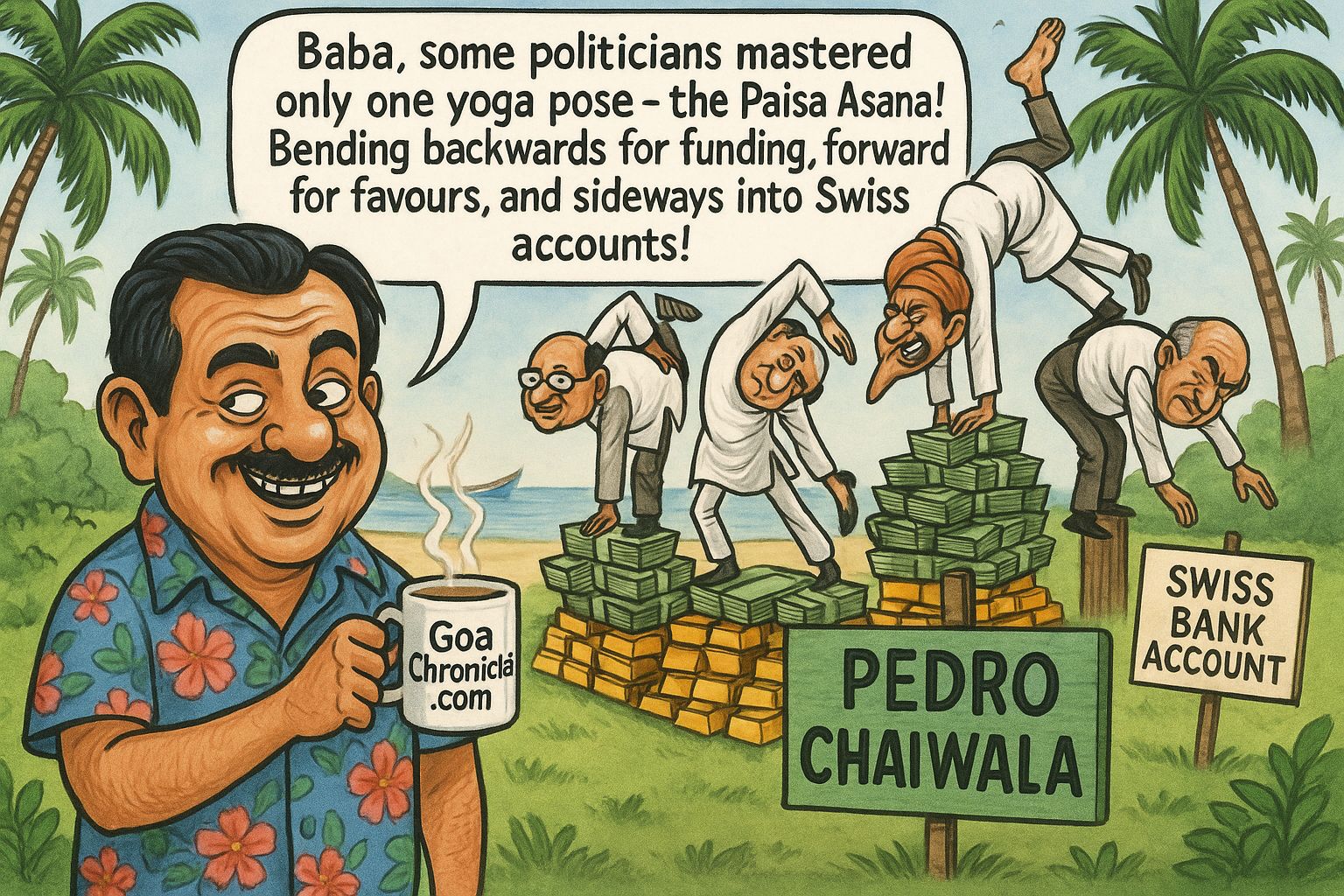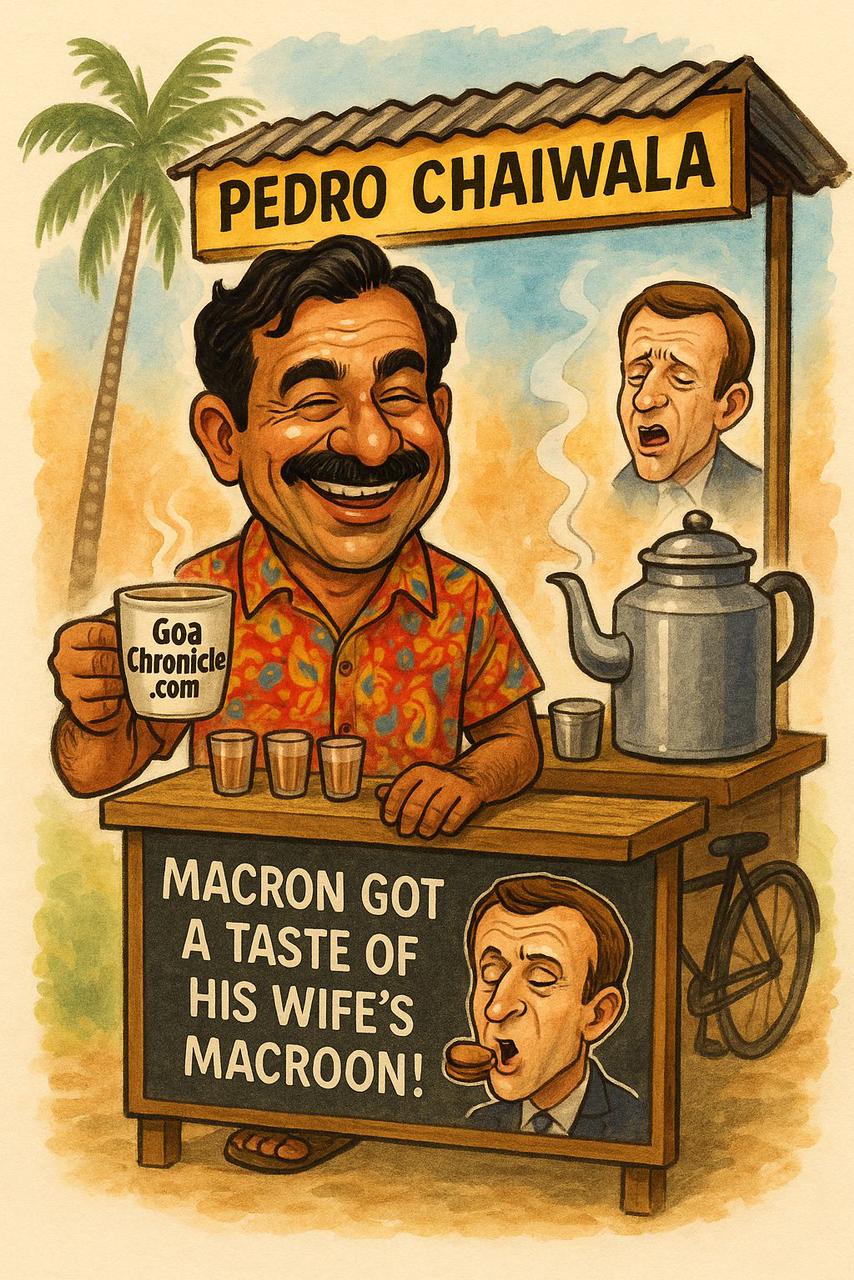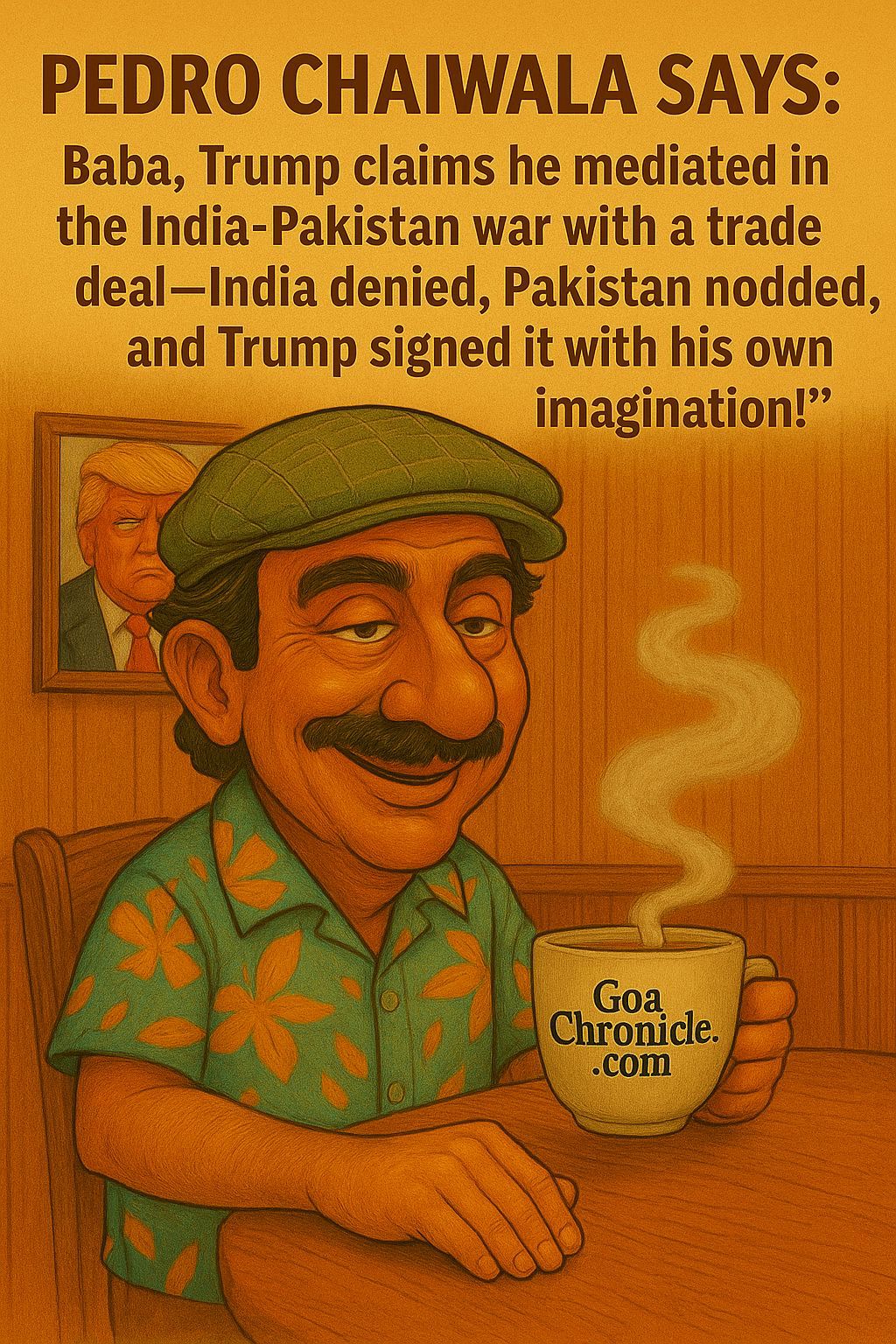The reintroduction of sweeping tariffs under President Donald Trump’s administration in 2025 has reignited a global debate about protectionism and its real-world economic consequences. With a bold move to impose a 10% blanket tariff on all imports—and higher duties targeting key trade partners like China, the European Union, Japan, Vietnam and even India -Trump has effectively transformed the global trade landscape overnight. While the stated intent is to bolster American industry and reduce trade deficits, the fallout from these policies has already sent shockwaves through financial markets and disrupted economic forecasts in both the United States and abroad.
In the immediate aftermath of the tariff announcement, markets responded with acute volatility. The Dow Jones Industrial Average dropped 3,910 points over two days—its steepest fall since the COVID-19 pandemic. The S&P 500 and Nasdaq followed suit, each declining nearly 6%, culminating in a $6.6 trillion evaporation of market value. Asian markets mirrored the chaos: Japan’s Nikkei 225 fell nearly 8%, while the Hang Seng Index in Hong Kong plummeted 12.4%. In China, the Shanghai Composite Index declined 8.4%. Such sharp corrections reflect not just investor fear, but also a recalibration of economic expectations in light of rising input costs, disrupted trade routes, and retaliatory tariffs from affected countries.
Domestically, the U.S. economy is staring at a complex web of implications. On one hand, the tariffs aim to protect American jobs and industries, especially in sectors like steel, aluminum, and domestic manufacturing. On the other hand, they act as a regressive tax on consumers and small businesses. JPMorgan has revised its economic outlook, forecasting a 0.3% contraction in U.S. GDP in Q4 2025, accompanied by a 60% probability of a global recession. The average American household is expected to lose around $3,800 in purchasing power due to rising prices across everyday goods—from electronics and appliances to clothing and food.
The inflationary effect of tariffs cannot be overstated. As the cost of imported goods rises, businesses are forced to either absorb the losses or pass them onto consumers. In a high-interest rate environment, already marked by post-pandemic inflationary pressures, this creates a toxic mix of slowed consumption and reduced economic confidence. Small- and medium-sized enterprises, many of which rely on imported materials for production, are among the hardest hit, with dwindling profit margins and limited pricing power.
Agriculture, historically a collateral victim in trade wars, is once again in the crosshairs. Retaliatory tariffs from China, the EU, and other affected nations are targeting American soybeans, dairy, beef, and other staples. American farmers, who have only recently recovered from the disruptions of COVID-19 and earlier U.S.-China trade tensions, are being forced to find new markets or scale down production. With election season rhetoric emphasizing “America First,” Trump risks alienating a key part of his rural voter base by allowing agriculture to become a bargaining chip.
The manufacturing sector—a supposed beneficiary of the tariff regime—is experiencing a more nuanced outcome. While some domestic producers might benefit from reduced foreign competition, many manufacturers rely on global supply chains and imported raw materials. The automotive, aerospace, and electronics industries are particularly vulnerable, as they are capital-intensive and globally integrated. Rising costs on inputs such as rare earth metals, semiconductors, and steel make American-made products less competitive in international markets. Ironically, this could lead to job losses in export-oriented industries even as Trump claims to be protecting American labor.
On a broader scale, the global economy is beginning to exhibit signs of stress under the strain of heightened trade tensions. The Organisation for Economic Co-operation and Development (OECD) has revised its global growth forecast downward from 3.3% to 3.1%, citing a sharp decline in international trade volumes and business investment. Multinational corporations are putting capital expenditure plans on hold, while emerging markets—especially those whose economies are heavily reliant on exports—are seeing capital flight and currency volatility.
Financial markets are reeling from what appears to be a lack of strategic clarity. In previous trade disputes, such as the 2018-2019 U.S.-China trade war, investors had at least the benefit of timelines, backchannel negotiations, and an eventual phase-one agreement. This time, the Trump administration’s stance is far more unilateral and ideologically entrenched. The unpredictability surrounding trade policy has undermined investor confidence in the U.S. dollar and even Treasury securities, long considered global safe havens. As one senior economist aptly put it, “The global economy isn’t just reacting to tariffs—it’s reacting to the sense that the United States has become a source of systemic risk.”
At the geopolitical level, Trump’s tariff regime is forcing countries to reconfigure alliances and seek out alternative trade arrangements. China and Russia have accelerated moves to settle more transactions in yuan and rubles, reducing reliance on the dollar. The EU is deepening its trade ties with Asia, Africa, and Latin America. Meanwhile, Southeast Asian economies like Vietnam and Indonesia, once touted as alternative production hubs to China, now find themselves ensnared in the crossfire. The weaponization of trade—once a theoretical debate—is now a lived reality.
The India Impact of Trump’s tariffs
India, though not a primary target of President Trump’s 2025 tariff regime, is indirectly affected by the resulting global economic turbulence. As a major exporter of pharmaceuticals, textiles, IT services, and automotive components, India faces challenges due to disrupted global supply chains and reduced demand from key markets like the U.S. and EU. The increased cost of imported inputs—especially electronics and machinery—could raise production costs for Indian manufacturers.
However, there are also opportunities. With tariffs on Chinese goods rising, India could benefit as a potential alternative manufacturing hub for global companies seeking to diversify their supply chains. But to capitalize on this, India must act swiftly on policy reforms, infrastructure upgrades, and ease-of-doing-business initiatives.
However, like the global markets, imposition of sweeping tariffs by U.S. President Donald Trump in April 2025 has triggered significant turbulence in the Indian stock market, revealing the deep interconnectedness of global trade and investment flows. Though India was not initially the primary target, the U.S. announced a 10% blanket import tariff, followed by a staggering 26% tariff on Indian goods, sparking immediate investor concern and broad market sell-offs. The Nifty 50 index fell by 6.3% within days of the announcement, with blue-chip and export-reliant companies bearing the brunt. This decline reflects a combination of factors—uncertainty over India’s trade competitiveness, anticipated retaliatory measures, and a general aversion to emerging market risk among foreign institutional investors (FIIs).
One of the most severely affected sectors was the automotive industry. Tata Motors witnessed a steep 10% plunge in share value after its luxury subsidiary, Jaguar Land Rover (JLR), announced a suspension of exports of UK-manufactured vehicles to the U.S. market due to the newly imposed 25% tariff. The U.S. accounts for more than a quarter of JLR’s global sales, making the halt both strategically and financially damaging. The announcement sparked investor panic, and Tata Motors’ market capitalization took a significant hit. This shock extended to other auto component manufacturers with exposure to U.S. supply chains, triggering a sector-wide downturn.
In contrast, the pharmaceutical sector emerged as a relative bright spot. The Nifty Pharma index rose by 3%, driven by news that pharmaceutical exports had been excluded from the new U.S. tariffs. This exemption offered temporary relief to drug makers and reassured investors that India’s globally significant generics industry might escape the worst of the trade fallout. Still, analysts remain cautious, noting that while pharma may have dodged the immediate bullet, secondary effects like currency volatility and rising logistic costs could temper gains in the medium term.
The information technology sector, a traditional heavyweight of the Indian stock market, did not fare as well. The Nifty IT index declined by 4% as investor sentiment soured on concerns that higher costs of U.S. operations and tighter outsourcing margins would erode profitability. As many Indian IT firms earn over half their revenues from the North American market, the tariffs, along with the potential for stricter trade-linked immigration controls, added to investor nervousness. Tech giants like Infosys and TCS saw their stocks under pressure as the narrative around global protectionism gained traction.
The broader sentiment across the Indian stock market was one of heightened uncertainty. FIIs, spooked by global instability, began pulling out capital, triggering liquidity stress and contributing to a sharp depreciation of the Indian rupee. This depreciation, while offering a short-term export boost, raised concerns about imported inflation and the rising cost of servicing external debt, particularly for companies with significant foreign currency exposure. Investors also fear that this macroeconomic pressure may force the Reserve Bank of India into a difficult position—balancing inflation control with the need to support growth.
The cascading effect of U.S. protectionism also triggered downward revisions in India’s economic growth forecasts. Goldman Sachs cut its 2025–26 GDP growth projection for India by 20–40 basis points to 6.1%, citing weaker export demand, slower capital flows, and fragile market sentiment. These projections have unsettled the market further, with traders now pricing in a longer-than-expected recovery period. The situation has been further complicated by India’s own pending decisions on whether to retaliate with counter-tariffs, a move that could escalate tensions but may be necessary to protect domestic industry.
Amid this volatility, institutional investors and market analysts are now calling for policy stability, urgent trade diversification, and structural reforms to improve India’s manufacturing competitiveness. The disruption has also underscored the need for India to become a more attractive alternative to China in global supply chains—a goal that remains aspirational unless backed by infrastructure improvements, regulatory simplification, and active diplomacy to secure favorable trade terms.
From an analytical standpoint, the fundamental flaw in Trump’s tariff strategy lies in its misdiagnosis of the modern global economy. Supply chains today are not linear but networked. They are not simply U.S. versus China or Europe versus America—they are interdependent, multi-country processes involving logistics, finance, and digital infrastructure. Disrupting them through blunt-force tariffs does not strengthen the American economy; it isolates it. While short-term political gains may be achieved by appealing to economic nationalism, the long-term costs—reduced global competitiveness, diminished investor trust, and diplomatic alienation—could outweigh any temporary manufacturing resurgence.
Trump’s tariffs represent a bold but economically hazardous bet on protectionism in an era of globalization. The immediate impacts—market crashes, inflation spikes, and recessionary fears—are symptoms of a deeper malaise: a retreat from rules-based international trade in favor of economic unilateralism. If not recalibrated, these policies could leave lasting scars not just on the U.S. economy, but on the global economic order that has prevailed for decades. The coming months will test whether America’s allies, adversaries, and domestic industries can withstand this seismic shift—or whether a correction in strategy becomes inevitable under the weight of economic reality.
































